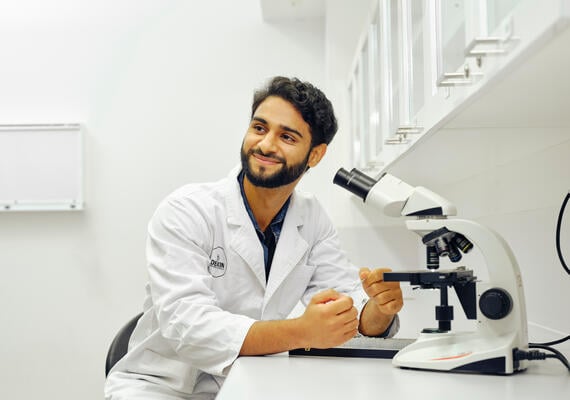
Baker Heart and Diabetes Institute partnership
Deakin has a long history of shared research partnerships that give students a unique insight into the latest research and techniques in exercise physiology and sports science.
Our Master of Clinical Exercise Physiology students cut their teeth in world-class facilities like the Deakin Clinical Exercise Centre.
To become a leading practitioner, it helps to learn within leading facilities.
Over the 10 years we’ve been offering the Master of Clinical Exercise Physiology, our School of Exercise and Nutrition Sciences has grown from a small space to one that houses world-class facilities.
When you study the Master of Clinical Exercise Physiology (MCEP), you’ll fully immerse yourself in real, functional clinics and adopt the mindset of a practising clinician from the start of your degree.
The primary teaching space for MCEP students is the Deakin Clinical Exercise Centre (DCEC). There, students work alongside accredited exercise physiologists to create meaningful exercise and lifestyle programs to help improve clients’ fitness, function and quality of life.
Master of Exercise Physiology Course Director Clint Miller says the DCEC is a completely immersive integrated learning environment.
“Almost every unit that our students complete in the course is taught within that space, and we've got a multipurpose space which sits next door,” he says.
It's probably the most immersive integrated learning environment we've got at Deakin, in that students are learning in a fully operational clinic for the whole 18 months of their course.
Clint Miller
Course Director, Master of Exercise Physiology

Deakin has a long history of shared research partnerships that give students a unique insight into the latest research and techniques in exercise physiology and sports science.
The Baker partnership focuses on shared research expertise in the areas of diabetes and cardiovascular risk and control, cancer, physical activity, and sedentary behaviour.
As part of the program, Deakin provides the clinical exercise physiology service as part of as the Baker’s multidisciplinary Healthy Lifestyles Clinic. Most of the community members who present to the clinic are cardiometabolic clients.
“The clients will work with the dieticians, but they'll also work with our exercise physiologists. Deakin students attend one of their three days when they're on their internal placement down at the Baker,” says Clint.
“It enables them (the Baker) to be able to provide a service that they were unable to fulfill in the past; and it also gives us an opportunity to have students on placement under our supervision.”
Students gain exposure to real clients and benefit from the knowledge and experience of complementary practitioners like dieticians and diabetes educators.
The mission statement of DCEC is to help improve health outcomes and quality of life for people living with chronic disease, injuries, or disability. While the clinic was first developed to allow masters students to apply their clinical knowledge to real clients, it’s now regarded as an invaluable service for the community.
Students studying the MCEP at Deakin benefit from the hands-on learning experience and client interactions at both DCEC and the Baker Institute. They get to meet clients, conduct assessments and create programs to benefit clients’ health and improve their overall wellbeing. And, they get to see the difference their expertise makes to their clients’ lives.
The DCEC facilities are world-class and contain incredible specialised and innovative exercise and rehabilitation equipment.
“We've got more specialised equipment at Deakin. We've got things that you just don't see anywhere else, like overground harness and gantries,” says Clint.
“From a facilities perspective, it's probably the best exercise physiology equipment and facilities on offer. We could have somebody doing overground walking who needs maybe some de-weighting, so they have a harness set up to reduce some of their body weight so they can perform walking with less fatigue and more safely.”
Masters students also have access to the multi-million dollar Specialised Indoor Exercise and Sport Science Teaching Building. There, they can complement their own training and deepen their understanding across any of the four levels of state-of-the-art teaching labs and equipment.
If you’re ready to immerse yourself in exercise physiology, there’s no better place to do it. Find out more about our Master of Clinical Exercise Physiology today.